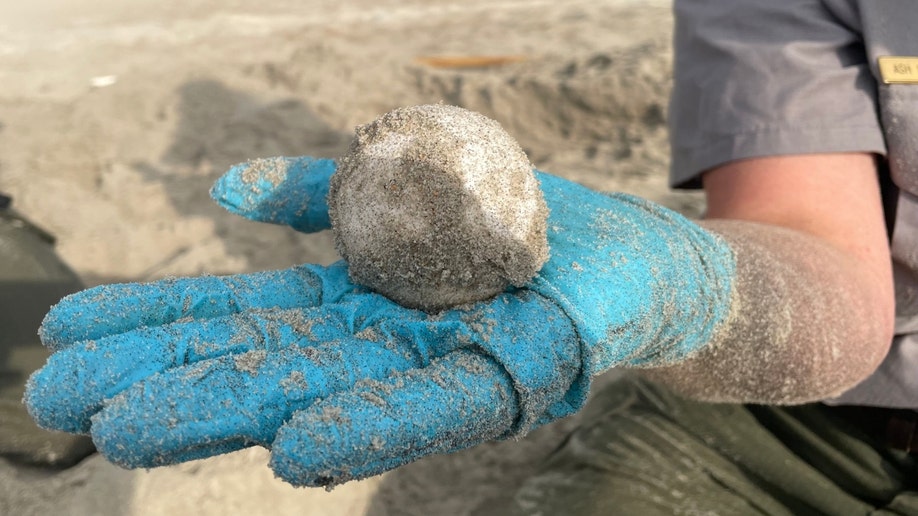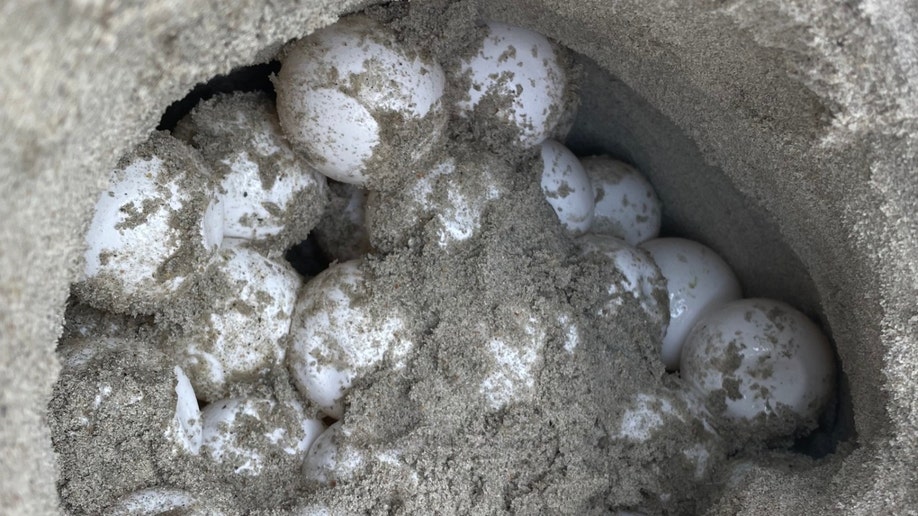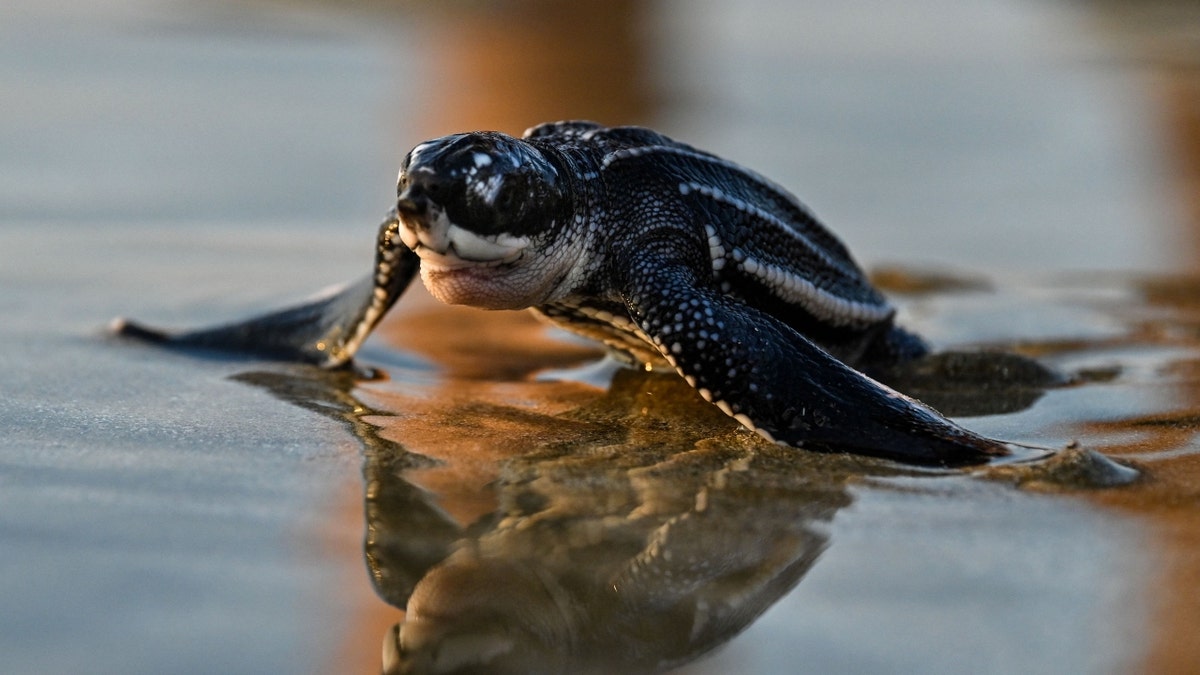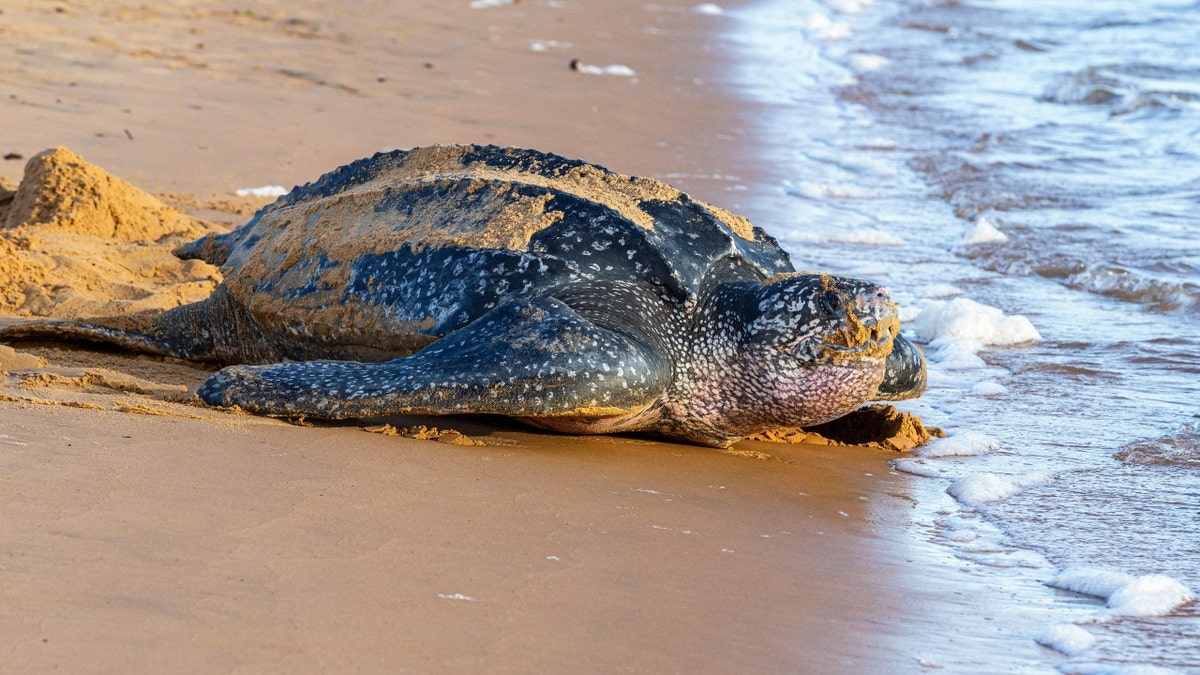A rare event has graced the shores of North Carolina's Ocracoke Island: a leatherback sea turtle, an endangered species, has nested there for the first time in over a decade. A nest containing 93 eggs was discovered on June 20th, marking only the sixth recorded instance of leatherback nesting at Cape Hatteras National Seashore.
The nest, initially located precariously close to the high tide line, was carefully relocated by park biologists to ensure the safety of the eggs. Alexa Lyne, a Scientist in Parks intern, played a key role in locating and relocating the nest.

A person holds one of the leatherback sea turtle's eggs. (Cape Hatteras National Seashore/NPS Photo)

The relocated leatherback sea turtle nest on North Carolina's Ocracoke Island. (Cape Hatteras National Seashore/NPS Photo)

Alexa Lyne, an intern at Cape Hatteras National Seashore, stands in the turtle's tracks. (Cape Hatteras National Seashore/NPS Photo)
Leatherback sea turtles, the largest sea turtle species, are unique for their leathery skin instead of a hard shell. These ancient creatures can grow up to 2,000 pounds and 6.5 feet long, and they've existed since the time of the dinosaurs. Known for their impressive migrations of over 10,000 miles annually and deep dives reaching nearly 4,000 feet, leatherbacks have the widest global distribution of any reptile.

A young leatherback sea turtle makes its way to the ocean. (Photo by CHAIDEER MAHYUDDIN/AFP via Getty Images)

An adult leatherback sea turtle on a nesting beach. (Photo by JODY AMIET/AFP via Getty Images)
Sadly, despite their wide range, leatherback populations are declining rapidly, classified as endangered under the Endangered Species Act. Threats include accidental capture in fishing gear, hunting, and egg collection. The Pacific populations are considered particularly vulnerable.
Comments(0)
Top Comments